Text
Gosh.. I’ve been inactive on this blog. To post or not? It would be not TNOs, gathering that information is a little hard as there’s not much to go on.
1 note
·
View note
Text
Now taking requests on what TNOs or planetoids to cover. Send me an ask and I will do my best to cover it for you.
Please do not ask for ones that have already been done.
11 notes
·
View notes
Text
486958 - 2014 MU69 (Ultima Thule)

Ultima Thule is a cold cubewano that orbits once every 298 years. It is not in any resonance with Neptune, Ultima Thule holds the title of the most distant object visited by a spacecraft - New Horizons - but this is bound to change when New Horizons visits a potential target later on in its trajectory.
Ultima Thule is what we call a contact binary. It is a relatively small and great example of a contact binary - it is 31km across, and actually is relatively intact. It shows the “neck” where both objects collided at an estimated 5mph, which left both objects, Ultima and Thule intact. Any faster, and they would have fallen apart.
Ultima Thule proves many theories about how Earth formed right, but also leaves us with mysteries - how did they come to be together, but one mystery we haven’t solved is, why is Ultima Thule so flat?
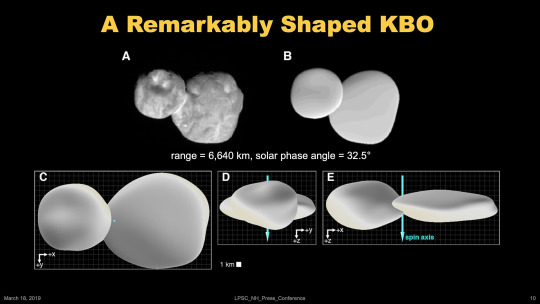
Ultima Thule was originally thought to be round, and its spin axis was thought to be much different. We now know, from images of Ultima Thule, that it rotates once every 15.9 hours, which is normal for a KBO, but not of this size. We would have thought it would be faster for a small KBO.
This can only be solved by a drag satellite being in orbit around Ultima Thule but no evidence of such has been found, they would have to be under 1km, which would make them the smallest moons in the solar system.
Ultima Thule has a lack of impact craters, suggesting that impacts are not common in the Kuiper Belt, especially of sizes like Ultima Thule. We also do not know how it became so flat, but it was likely that these two objects were rotating rapidly when they formed, then became flattened out after that.
Ultima Thule is so incredibly small, it had to be found using the Hubble Space Telescope, and couldn’t be viewed from Earth. It was so hard to track, making its mission with New Horizons the most difficult task ever performed by a computer and humans. But we pulled it off.
New Horizons also found that Ultima Thule did not have any rings, or very much debris around it, so it was clear to get better photos. We also originally thought that Ultima Thule was a spheroid, and did not think it was a binary until 2017, when during an occultation event, we found its shape, proving that it was a binary object, but we didn’t know what kind of binary object.
It became from a “bowling pin” to a “snowman”, and we learnt of its contact binary shape.


#ultima thule#2014 mu69#kuiperbelt#new horizons#pluto#newhorizons#nasa#space#astronomy#kuiper belt#planetoid-adventure
56 notes
·
View notes
Text
Space Engine Renders
Pluto-Charon

Quaoar-Weywot
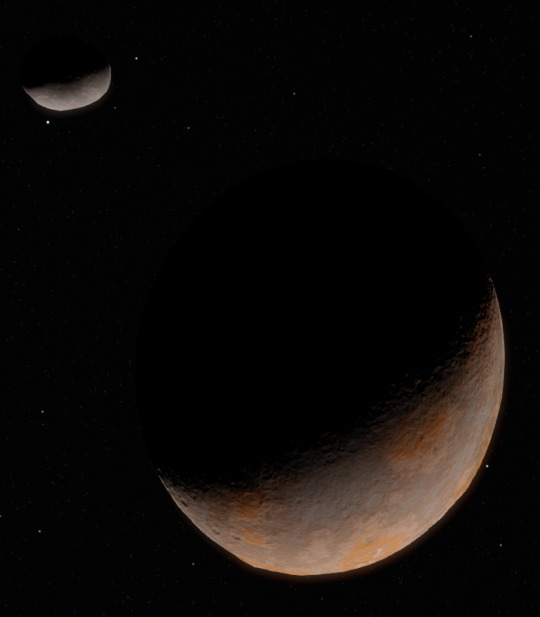
Makemake-MK1
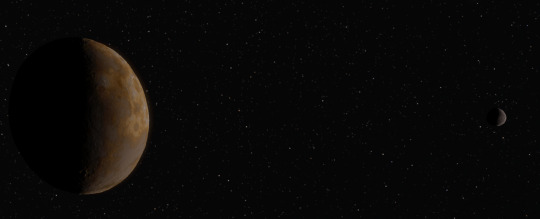
Orcus-Vanth

2007 OR10

Haumea, Namaka-Hi’aka

Sedna
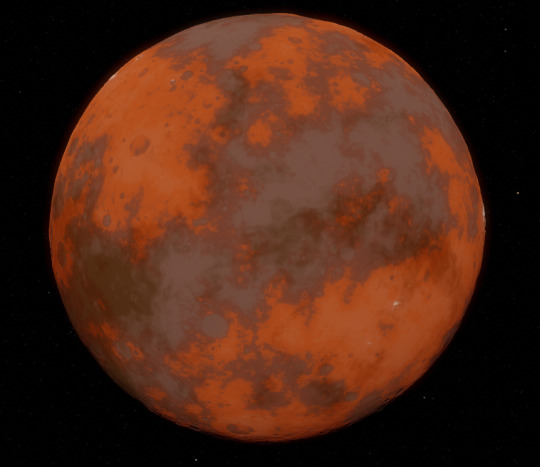
Eris-Dysnomia
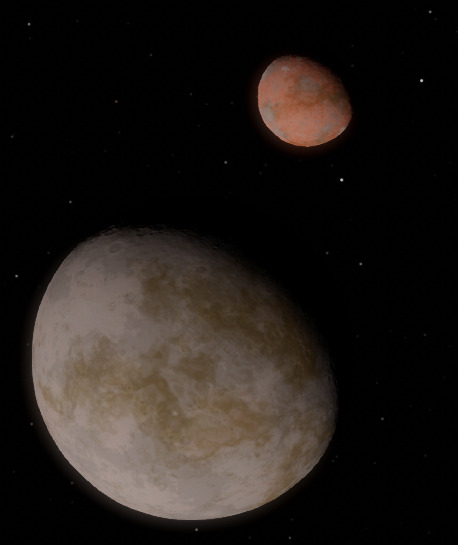
Ixion

G!kun + Goe Hu
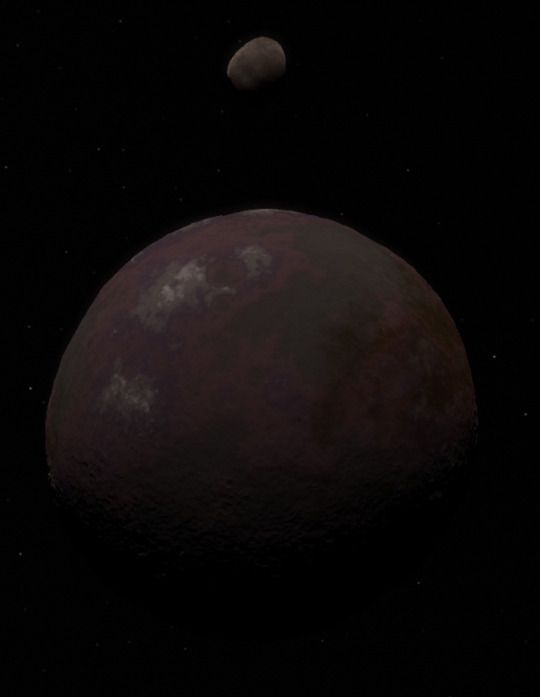
Varda-Ilmare
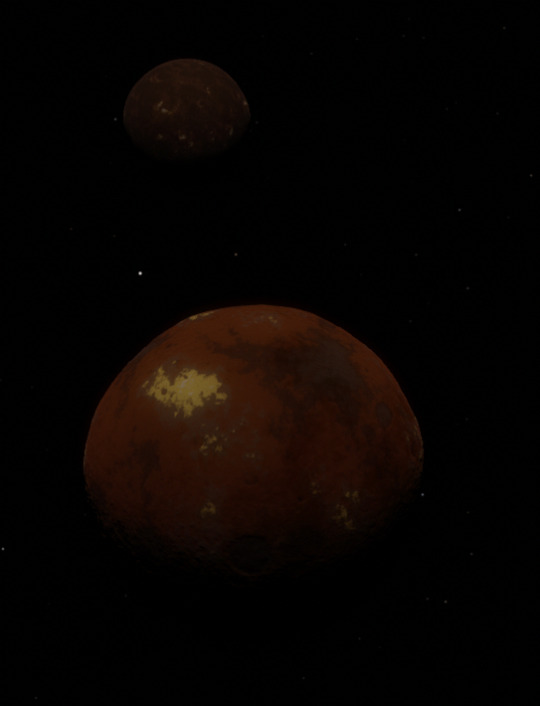
#pluto#charon#eris#dysnomia#varda#varuna#ilmare#ixion#sedna#haumea#namaka#hi'aka#makemake#quaoar#weywot#space#astronomy#space engine#kuiper belt#scattered disk#scattereddisk#kuiperbelt#spaceengine
169 notes
·
View notes
Text
Would you all like to see Space Engine renders of the objects I have covered? I’d be gladly happy to place them in an album to do so. I will also make them look as nice as possible.
4 notes
·
View notes
Text
174567 Varda
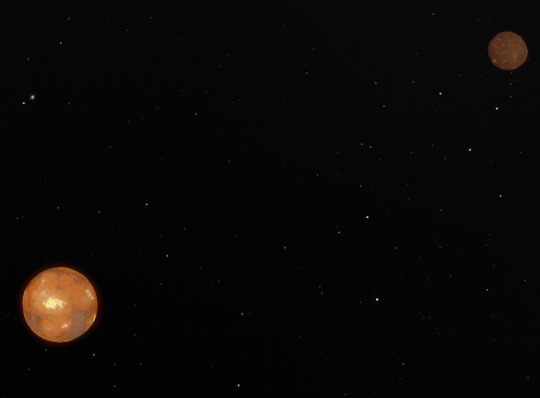
(Space Engine rendition of the Varda-Ilmare system)
174567 Varda is a trans-neptunian object of the cubewano class, located on average 46AU from the Sun. It reaches aphelion at 52 AU from the sun, and at closest approach, 39 AU. This orbit takes it about 312 years to orbit once.
Varda has a diameter of 700km across; and probably has not differentiated, meaning its heavy materials, such as iron and nickel, have not sunk to its core. Varda was discovered in images reviewed in 2003, by astronomer J. A. Larsen. Previous images of Varda have been found back as early as 1980.
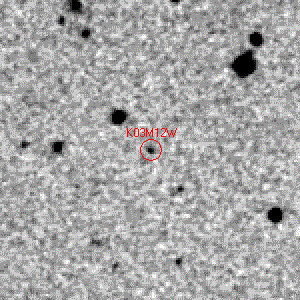
A pre-recovery image of Varda, taken in 1994. This was taken from the Palomar Observatory, and was a 55 minute exposure. Doing this would normally leave very blurry images and elongated artefacts.

Varda has one moon, which is called Ilmare. Not much about Ilmare is known, part from the fact that Ilmare is Varda’s binary partner, takes about 5 days to orbit around Varda, has very little eccentricity and may even orbit at a very inclined orbit, over 82 degrees, but as little as 100 degrees, bringing up the idea that it may orbit retrograde.
Ilmare, like Varda, is in the red part of the spectrum, much like other Kuiper Belt objects. Ilmare is slightly redder than the primary however, and not much is known other than that.
Varda likely rotates once every 5.6 hours, and shows sign of methane ice upon its surface. This fast rotation rate brings up the idea of Varda being squashed, like Haumea but I cannot find anything on this.
45 notes
·
View notes
Text
229762 Gǃkúnǁʼhòmdímà
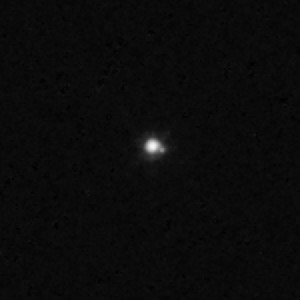
For today, I will be referring to this object as 229762 G!kun , because there is no chance in hell I am typing that name out.
229762 G!kun is a scattered disk object, much like Eris, measuring 600km in diameter. It is nearing perihelion, not like Eris which is near its aphelion. In 2046, G!kun will reach perihelion.
G!kun was scattered onto its current orbit by Neptune during the proposed “Late Heavy Bombardment” phase in the solar system, and has an eccentricity of its orbit of around 0.48, more that of Eris’.
G!kun’s irregular shape makes it hard for a rotational period to be calculated, but a solution to this is just above 11 hours. Its mass is just higher that of Enceladus’, but its mass is 2% of that of the Moon. Its mass was calculated through discovery of a moon, in 2008.
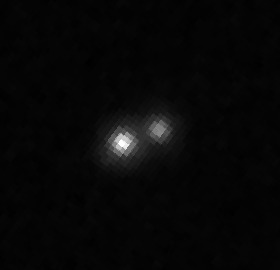
G!kun’s moon, which I will be referring to as Goe Hu, is one of the reddest objects in the solar system. It is around 100km in diameter. Its mass can be calculated with G!kun, but this is not known yet or shared.
There is not much on G!kun and Goe Hu, other than the two objects are pretty porous, having a low density for a TNO. This is not really unusual.
Goe Hu, despite being a red moon, may have the same albedo as G!kun, which is unusual for a satellite.
And, that’s it for this post. I’m surprised there’s so little data on this object, with it coming to periapsis not too soon. Perhaps we should send a probe to G!kun, so we can learn about SDOs. We don’t have much data on SDOs, which I am particularly interested in.
8 notes
·
View notes
Text
My dearest apologies for not uploading yesterday.
To make up for this, I will be doing two posts today.
0 notes
Text
28978 Ixion

28978 Ixion is a plutino that was discovered in 2001 through the Deep Ecliptic Survey.
Ixion is notable because it was the first TNO that was regarded, since Pluto, to be larger than the dwarf planet Ceres. For a year after its discovery, it was regarded as bigger than 1000km in diameter total, which would make it about 100km larger than Ceres, a notable feat.
We now know that Ixion probably has a high albedo, but a diameter of 650km in size, making it smaller than Ceres.
28978 Ixion is red - slightly redder than the cubewano 50000 Quaoar. It is approximately 41 AU out, meaning that any atmosphere it has would be thin or non-existant at all. On its surface, water ice and tholins have been found.
Ixion is known to be spherical due to little deviations in its light curve, and its rotation was figured out this way. It was calculated to be around 12.4 hours, half of an Earth Day.
The mass of Ixion cannot be found out - or it would be incredibly hard to, due to the fact that no moon has been found around Ixion.
Ixion’s orbit is different to that of Pluto’s. It takes about 0.5% longer to orbit the sun, and its perihelion is under the ecliptic plane, instead of above it, meaning that Ixion spends most of its time in the northern hemisphere, where it would be visible.
An atmosphere was not detected (a coma) around Ixion, meaning that when it arrives in 2070, at perihilion, it could develop one, but this isn’t known yet. This would be temporary, like all TNOs, who would lose their atmosphere when moving away from aphelion. Pluto will likely lose its atmosphere by 2030.
Well, this is a relatively short one today. Not much is known about Ixion, and all the others I did had lots of data on. This means the ones I will do on will be shorter than the ones I do do, which is sad.
Anyway, let me end you on Ixion.
In 2012, a study was published upon Ixion and another TNO, Huya, which suggests that these two are the most feasible for an orbiter which could help us gather data upon the Kuiper Belt. It could also discover a moon around Ixion which would be nice.
7 notes
·
View notes
Text
136199 Eris

136199 Eris is the furthest known dwarf planet from the sun, located just over 96 AU from the Sun. Eris was discovered by the astronomer Michael E Brown in 2005 through images taken in 2003, although earlier images have been found as far back as late 1954.
Eris is also the most massive of the dwarf planets, being 27% more massive than Pluto, and around the same size. Its mass was calculated through the discovery of a moon around Eris in 2005, called Dysnomia. (di-snomia). This moon was the moon that fully killed off Pluto.
Eris has a rotational period of just over 1 day, and has a mass of just under 1/4 of a moon. It is named after the Greek godess of Discord and Strife, a rather fitting name for what it achieved.
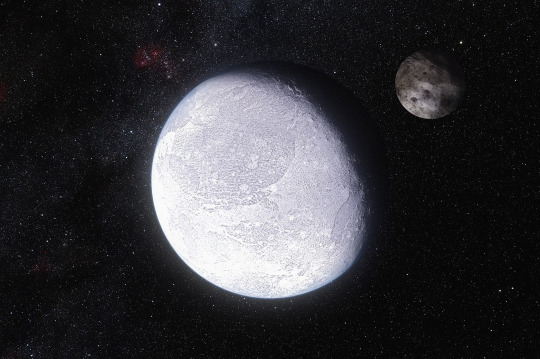
Eris is notable for its remarkable brightness - its albedo is 0.96, the highest in the solar system. Its brightness is probably due to the frozen atmosphere upon Eris’ surface, as it reached aphelion in 1977. It is currently moving towards perihelion, which it will arrive in 2256-2258.
Eris has an apparent magnitude of 18.7, meaning that a telescope of 7.9″ with a CCD can detect Eris. This has been done before. Naturally, you would need a telescope that’s over 20″ without this.
Eris is classified as a Scattered Disk object, meaning that it was forced onto its current orbit by Neptune during the movement of the outer planets. It is not in a resonance with Neptune. Many objects were scattered and we are yet to find them. Perhaps there is one bigger than Eris?
Dysnomia is notable for its extreme darkness. It is the polar opposite of Eris, having an albedo of 0.04. Unlike Dysnomia, Eris is known to have little to no low albedo spots, and an absence of tholins, which is odd. It is likely that the tholins were covered as it moved away, or it had none at all.
Eris also appears completely white, raising the possibility that it has been far out all of its life, and not been within the orbit of Pluto for very long at all. This proves a hypothesis about the orbit of Neptune interacting with primordial Eris to send it out on this orbit.
Eris likely varies between -242C and -217C. It is very cold, and reflects nearly all the light that hits it. Eris could also have a very small layer of a subsurface ocean near its mantle-core boundary.
Eris was regarded as the 10th planet as soon as it was announced. Mike Brown originally wanted to keep Eris’ discovery a secret until he had more data upon it. Mike Brown was excited over the discovery of Eris - a planet he had longed to find, and he had found it. What else could they call it if it was bigger than Pluto, but a planet?
A moon was found around Eris, confirming his idea, but adding to the controversy. The IAU had to come up with a definition for a planet, due to the minor planets, and ended up making Pluto and Eris the new dwarf planets, along with 2 others of Mike Brown’s discoveries - Haumea and Makemake.
Let me end Eris upon this note. Eris is by far the most interesting of the known dwarf planets beyond Neptune in my opinion. I believe we need to send a probe there to map its surface, much like Sedna’s, as soon as we can - to see what it is like in the far solar system. But, the problem would be this - can we get there quick and conserve energy? A probe to Eris would likely take over 20 years to get there, maybe even 30 above years. A mission on that scale would take a Voyager scale operation.
Why have we forgotten about the dwarf planets? Why doesn’t the IAU name more? We don’t know. But I want to know why they don’t. I’ll finally end this here.
Eris, a mysterious world, but perhaps not the end in Mike Brown’s quest for a planet.
#Eris#Dysnomia#astronomy#neptune#pluto#solar system#space#kuiper belt#Scattereddisk#planetoid-adventure
13 notes
·
View notes
Text
90377 Sedna
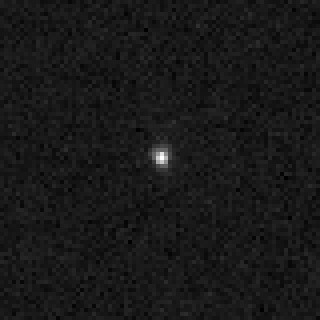
A lonely world, orbiting the sun up to possibly 937 AU away, Sedna is a dwarf planet discovered in 2003 by the astronomer Mike E Brown.
Sedna is the only known large dwarf planet of its size not to have a moon, which is weird. Sedna is approximately 1000km across, up to 900km minimum, and rotates once every 10 hours.
Sedna is remarkably odd because of its extremely elongated orbit, and high perihelion. There was no chance in hell Neptune could have interacted with Sedna, ever - if you interact with something, it always comes back to where you interacted with it from. Something interacted with Sedna as close as 76 AU from the Sun, and brought Sedna onto this orbit.
Sedna was found when it was 90 AU from the sun, making its discovery a fluke. Astronomers knew that if it was any further, it would have not been spotted. It was the furthest known object in the solar system when it was found. Now, that title belongs to “FarFarOut” or 2018 VG18 - approximately 125 AU away.
When Sedna was found, its rotation was thought to be up to 50 days long, possibly hinting a binary companion. Astronomers now know it is 10 hours long. Might we have missed a satellite? Perhaps. But we will need to find it- we cannot measure mass easily without finding a satellite. Only one attempt has been made, and there’s a 25% chance we missed it.
Sedna is amongst the reddest objects in the solar system, common for trans-neptunian objects. It is a dark red, nearly as red as Mars. Tholins may be probable on Sedna but this is not known yet.
Sedna may have an atmosphere, but it is up to -237C cold, so it would be extremely thin.
Sedna may be capable of supporting a subsurface ocean.

There’s several theories for Sedna’s origin - a passing star, or even the Mythical Planet Nine that tossed it out of its circular orbit which it formed in. We don’t know, and that will have to be proven.
Simulations have shown that both of these possibilities are likely, but following the discovery of several sednoids and past discoveries, the Planet Nine hypothesis is more likely for Sedna’s origin.
Sedna will come to perihilion in 2075-76, and this is a great opportunity to learn about the primitive early solar system, as Sedna will be well preserved due to its extreme distance and coldness. Mike Brown, Sedna’s discoverer, thinks that Sedna is the most scientifically important discovery of a TNO to date.
Sedna is likely to prove several theories right and wrong about the early solar system. It’s often called an inner-Oort Cloud object, or a Detached Object because we don’t know about it. We don’t know one bit and we can’t answer that without a probe.
22 notes
·
View notes
Text
136108 Haumea

136108 Haumea is a dwarf planet orbiting within the Kuiper Belt. It has two moons, and is the third largest Trans Neptunian object, behind only Pluto and Eris.
What is remarkably odd about Haumea is its rapid rotation. Haumea’s day is only 3.9 hours long, and was found out through its light curve. Any faster, and Haumea would rip itself apart.
Haumea is in a special 7:12 weak resonance with Neptune. It orbits once every 283 years, and passed aphelion in the early 1990s. Haumea is made more special by the fact that it is part of a collisional family, that may provide evidence for why it got such a fast rotation in the first place.
It is also made more unusual by the fact that it has water ice present upon its surface, only retained by large TNOs. This means Haumea had recent resurfacing within the last 10 million years. Atleast 2/3 of the Haumean surface is made of crystalline ice, which is odd. It keeps Haumea bright and visible, which means that something must have happened to Haumea in the past to keep its surface replenished.
Haumea has one dark feature on its surface, however, a dark red spot that may be an impact feature. It has not been explained.
A ring has been found around Haumea in 2017, accounting for 5% of its brightness. It is well within the roche limit of Haumea and is close to the 3:1 resonance of Haumea - but not inside the resonance otherwise this would make them unstable due to Haumea’s shape.
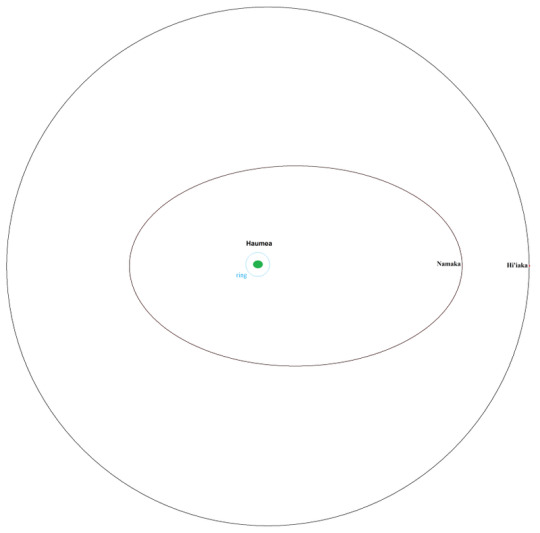
Haumea has two moons, Namaka, the inner moon, and Hi’aka, the outer moon. Namaka is on an irregular orbit, hinting that it may have been captured, while Hi’aka is on a circular orbit, meaning that it may have formed from an ancient impact event.
Hi’aka was the first of the moons discovered, with its brightness leading its first discovery. Namaka is the darker of the two, again proving the fact that it may have been captured in the past.
Transits between Namaka and Haumea occur, allowing for us to easily estimate Haumea’s size, but unfortunately these occured much before we discovered them, so we could not observe them. The next will occur in 130 years or so, meaning that we can only send a probe to Haumea to estimate its size better.
Michael E Brown vs Jose Luiz Ortiz
Two astronomers in 2005 battled it out for the discovery rights of Haumea. Ortiz claimed to find Haumea, but in reality, it turned out he had stole from Brown’s site of which he tracked telescopal objects, and Ortiz used this to his advantage to track Haumea and claim discovery.
This lead to a huge scandal taking place in 2005, leading to Makemake, and ultimately Eris being announced much earlier than first planned, September 2006; when Brown had more data upon the object.
To this day, there is no official discoverer of Haumea listed, although it should be Brown as Ortiz had stole from him and “had the discovery rights”.
#haumea#namaka#hi'aka#moon#dwarf planet#michael brown#jose luiz ortiz#kuiper belt#neptune#astronomy#solar system#space#facts#imagery#planetoid-adventure
6 notes
·
View notes
Text
225088 2007 OR10
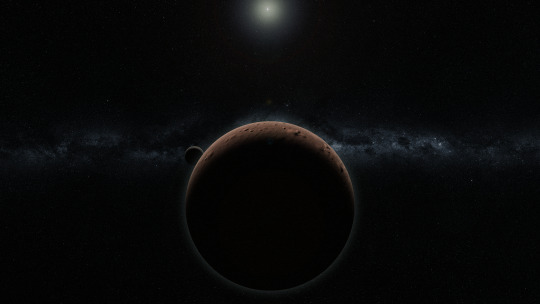
2007 OR10 is the solar system’s largest unnamed body. It is approximately 1,250km in diameter, and is a binary object.
2007 OR10 was discovered by Mike Brown and co in 2007, and was nicknamed “Snow White” for its brightness and assumed white colour, but later it was found to be one of the reddest objects known to this date due to the rays impacting its surface. Its redness was only comparable to that of Quaoar.
2007 OR10 has been found to have water ice and methane, making it similar to the other planetoid Quaoar also. It is likely that 2007 OR10 may have an atmosphere but that is not known. Another similarity 2007 OR10 and Quaoar share is that they may have evidence of cryovolcanism in the form of water ice upon their surfaces but it is not known if they both can sustain subsurface oceans.
2007 OR10 is likely to be in a 3:10 resonance with Neptune and is listed as what we know as a Scattered Disk object, objects ejected into widely eccentric and inclined orbits by the movement of Uranus and Neptune in the early days of the solar system. Eris is one of these SDOs, but Eris is not in any resonance.
Currently, 2007 OR10 is located 88x further than Earth is from the sun, making it extremely cold there. It is probably -240 Celcius or colder on 2007 OR10. By 2045, 2007 OR10 will be the furthest large body in the solar system, being further out than both Sedna and Eris. It will reach an aphelion of 101 AUs by 2130.
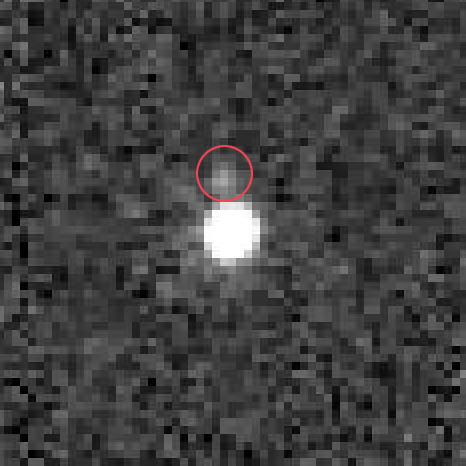
2007 OR10 has only one known moon, and was announced in 2016. It was found from images in 2010.
A moon was suspected originally from 2007 OR10′s slow rotation rate, usually caused by a moon slowing down the rotation like it did for our Earth.
2007 OR10′s moon diameter is not known but may be 300-100km in diameter maximum and possibly minimum.
Its orbit is actually well known, with an eccentricity of 0.31, raising the possibility that it may be a captured object, orbits once every 25 days and with a semi-major-axis of about 25,000km, or two Earths.
There is currently a poll going on to name 2007 OR10! The proposed names for 2007 OR10 are:
Gonggong, Vili and Holle.
https://2007or10.name/
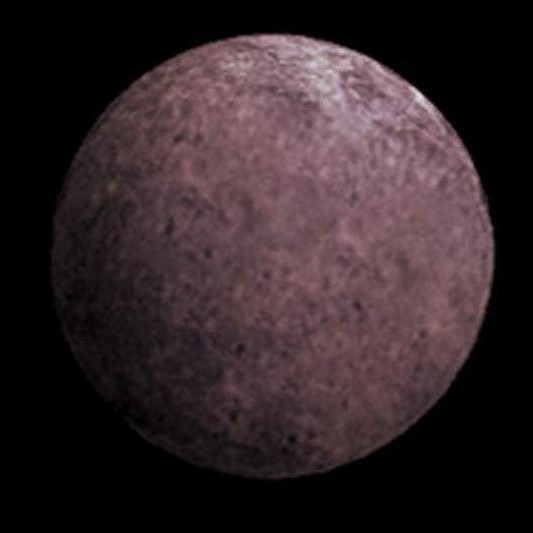
Artist’s impression of 2007 OR10
#2007 or10#moon#imagery#facts#space#astronomy#eris#kuiper belt#scattereddisk#sun#earth#poll#planetoid-adventure
3 notes
·
View notes
Text
90482 Orcus
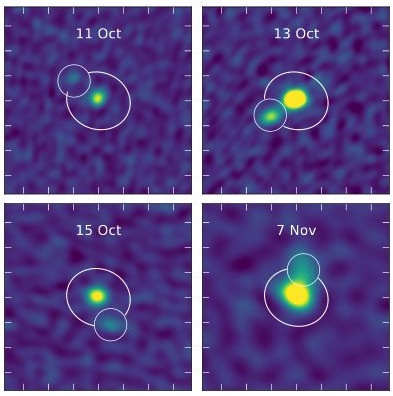
90482 Orcus is a plutino discovered in February 2004 by the astronomer Mike Brown. It is in a 2:3 resonance with Neptune, as are all plutinos. Plutinos are named after the first of the class discovered - Pluto.
Orcus is often called the “Anti-Pluto” because it has similar orbital parameters to Pluto, and is usually at aphelion when Pluto is at perihilion, and vice-versa. It is also called the Anti-Pluto because of its sole moon, Vanth, which is half of its size, and is likely its binary partner.

Orcus is approximately 910-917km in diameter, making it rather small. Vanth is estimated to be very small, about 442.5km in diameter, but dense enough to bring Orcus to orbit around a point in space called a barycenter.
Orcus’ mass has been measured to be, with Vanth’s discovery, 3.8% of that of the most massive dwarf planet, Eris. Vanth’s mass is estimated to be as high as 8% of that of Orcus’.

It is not known if Orcus is tidally locked to Vanth, but it may be likely so, making it even more of a counterpart to Pluto and Charon. It is likely that Orcus has a rotational period of 10.5 hours, as measured in a survey.
It is likely we are seeing Orcus pole-on. We might not be able to estimate Orcus’ rotation without a probe being sent there in the future.
Studies of Orcus shows that the surface of Orcus is featureless, and neutral in colour. It also came as a surprise that the surface of Orcus is not red, like most Kuiper Belt bodies. Like Quaoar, Orcus may have cryovolcanism upon its surface, with crystalline ice discovered.
The satellites of Uranus have similar composition to Orcus, which means by studying them, we may be able to study Orcus itself. By also studying Charon, we may also learn about Orcus, because Orcus has similar composition to Charon, but less ice. Orcus’ tholins are comparable to Triton, being rather dark.
Models have proven that Orcus is indeed capable of sustaining a sub-surface ocean, proving that cryovolcanism is indeed a possibility for this crystalline ice upon Orcus’ surface.
If a probe was to be sent to Orcus, it could likely take about 12-13 years to get there if Jupiter was in the right place. It could be used as a secondary New Horizons. Only this year did Orcus reach aphelion, and it is getting closer to perihilion, so only time will tell if NASA will send a probe there.
Again, relying to the Anti-Pluto nickname, Orcus and Vanth are the Etruscan equivalent of Pluto and Charon. Vanth is rather similar to Charun, or Charon.
Let me end Orcus upon this quote from Mike Brown:
Mike Brown stated that if Vanth “accompanies dead souls from the moment of death to the underworld itself, then of course her face is turned always toward Orcus” - a joke about the possible same orbit of Vanth around Orcus.

Artist’s impression of Orcus. Note the blue tinge which is odd upon KBOs.
#orcus#vanth#binary#pluto#neptune#space#astronomy#charon#cryovolcanism#dwarfplanet#dwarf planet#mike brown#kuiper belt#kuiperbelt#imagery#artists impression#planetoid-adventure
10 notes
·
View notes
Text
136472 Makemake
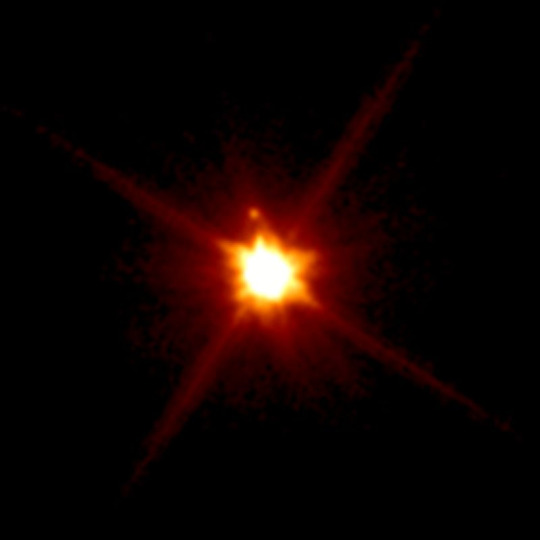
Makemake is a dwarf planet discovered in 2005 by the astronomer Mike Brown. Makemake is a dwarf planet, approximately 1400km in diameter.
What is unusual about Makemake is its brightness. If Clyde Tombaugh, the discoverer of Pluto, were to find Makemake, he would have found it. It is the second brightest Kuiper Belt object after Pluto. However, Makemake at that time was really close to the ecliptic, and near the Milky Way galaxy, which causes areas to be obscured, so he could not have found it amongst all the stars. He spent years looking for other objects, but only Pluto was found.
Previous images of Makemake were found back as early as 1955.
Makemake is amongst the reddest objects in the Kuiper Belt. It is also very cold, -243C, meaning that its surface has to be covered in tholins, methane, ethane and nitrogen ices.
Makemake, like Quaoar, does not fall into any resonances, and is considered a classical KBO. But, it does not fall into the “cold” category of cubewanos, but is rather considered one of the “hot” ones. What the hell does this means? “Hot” cubewanos are very cold! No, that’s not what it means.
Hot cubewanos are classical KBOs that have a high inclination respective to the rest of their class.
It’s also coincidental that Makemake lays near a resonance, the 11:6 resonance with Neptune.
Makemake was also found to have no atmosphere which is also odd amongst most Kuiper Belt objects. Pluto has one, so why doesn’t Makemake?
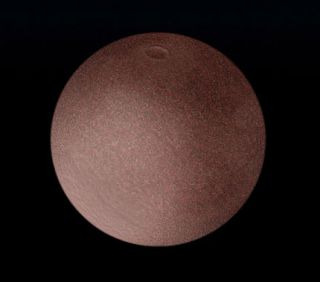
Originally, Makemake was an outlier. Most large KBOs had atleast one moon. Orcus with one, Quaoar with one, Haumea with two, and Pluto with five. No moon was to be found in several searches. Which was odd. It’s rotation was also especially fast, about 7.77 hours, which meant that Makemake probably didn’t have a moon.
In 2015/16, this all changed.
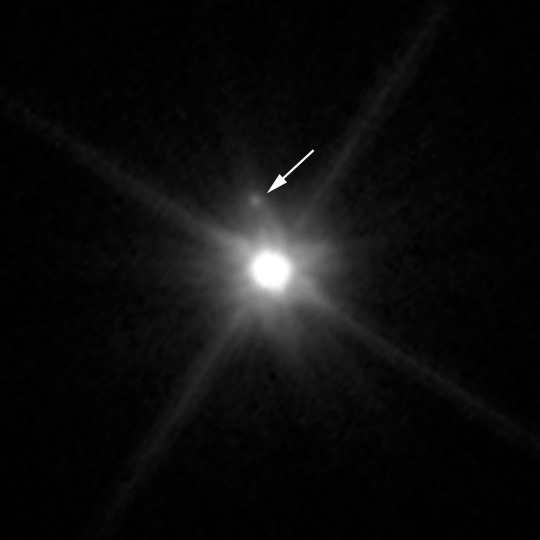
Look! A MOON! This moon is called MK2. MK2 is incredibly small compared to Makemake, about 175km across. Not much is known about MK2, other than it’s small, probably dim; comparative to charcoal. It’s also likely that it takes 12 days to orbit.
MK2 also likely explains discrepancies in Makemake’s light curve, probably explaining dark spots on Makemake’s surface. It is probably also aligned head on to Earth.
But, in 2019, there was something else found that was odd with Makemake.
Makemake’s rotation was much slower than first observed, around 22-23 hours. A rotation this slow for a dwarf planet is not possible without a much larger, closer satellite, that Hubble could not detect. This “MK3″ has to be around 5,000 miles from Makemake. It’s light curve is also very small, bringing up the theory that Makemake is pointing straight at Earth, equator on.
MK2 could also not be detected from a survey in 2019, probably due to lack of data of MK2.
20 notes
·
View notes
Text
50000 Quaoar
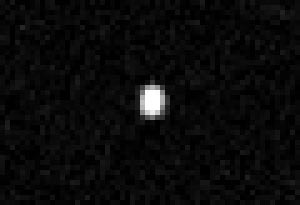
Quaoar is a minor planet discovered by the astronomer Mike Brown in 2002. It was the first planetoid discovered in the Kuiper Belt that approached half the size of Pluto. It was originally called “Object X” and fooled the astronomers for its brightness.
Mike Brown quoted that Quaoar was “a big icy nail in the coffin as Pluto as a planet”. Many media outlets, fooled by the brightness, which could only be shown IF Quaoar was large, or small and icy, quoted that Object X was bigger than Pluto and that it was the solar system’s 10th planet.
It was not.
Quaoar is approximately 1,100 miles across, with earlier images dating back to 1954.
Quaoar’s surface is mostly red, and has signs of methane upon its surface, showing it has strong gravity. Water ice has been found upon Quaoar’s surface in its spectrum, also hinting towards possible signs of cryovolcanism.
Water ice also shows that the temperature rose to as high as -163 Celcius in the past 10 million years, rather than its current temperature as -218. Temperatures that high are only seen as close as Saturn. It is likely cryovolcanism and natural decay of radioactive materials produced this heat.
Quaoar is not in an orbital resonance with Neptune, making it a cubewano, or a classical KBO. A cubewano is named after the first kuiper belt object, proving the existence of the Kuiper Belt in 1992. Not Pluto, but rather 1992 KB1. It is now named Albion.

Quaoar has only one moon. Its moon is called Weywot, and is approximately 80 miles across, discovered in 2006. This allowed scientists to calculate Quaoar’s mass.
Weywot is approximately 1/12 of the size of Quaoar, and may have 1/2000 of the mass of Quaoar.
There are two possible orbits for Weywot.
A prograde orbit, with a tilt of 14 degrees.
A retrograde orbit, with a tilt of 30 degrees.
How Weywot formed is not known, but it’s likely that an impact formed Weywot. This could be confirmed with a probe visit, which would take approximately 12-13 years, due to Quaoar’s relatively close proximity to Pluto, and similar distance to the sun.
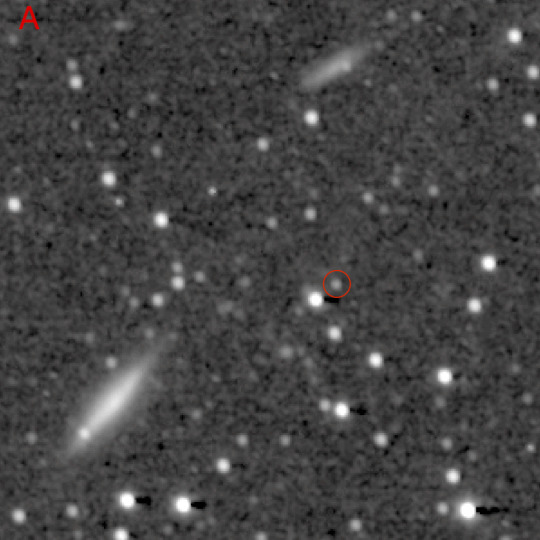
New Horizons could not visit Quaoar since it was low on solid fuel, and would run out on its approach. An interstellar probe could visit Quaoar, then go to visit the interstellar medium. This is promising due to its proximity to the heliospheric nose.
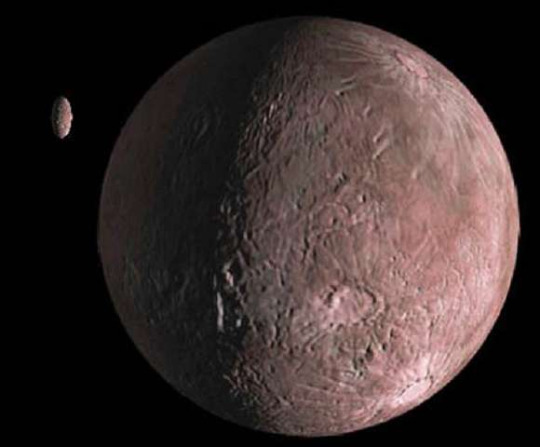
Artists impression of Quaoar and Weywot.
#quaoar#weywot#space#astronomy#dwarf planet#planetoid#kuiper belt#pluto#new horizons#kuiperbelt#facts#michael brown#imagery
2 notes
·
View notes
Text
134340 Pluto
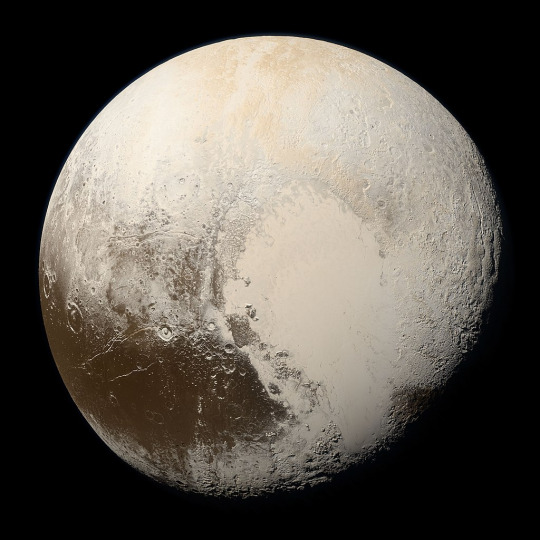
134340 Pluto is the first Kuiper Belt Object discovered. It has 5 moons, one of which is in tidal locking with it, and causes Pluto to orbit within a barycenter.
All the moons of Pluto are listed in order, of semi-major axis.
Charon (shar-on), about 606km radius.
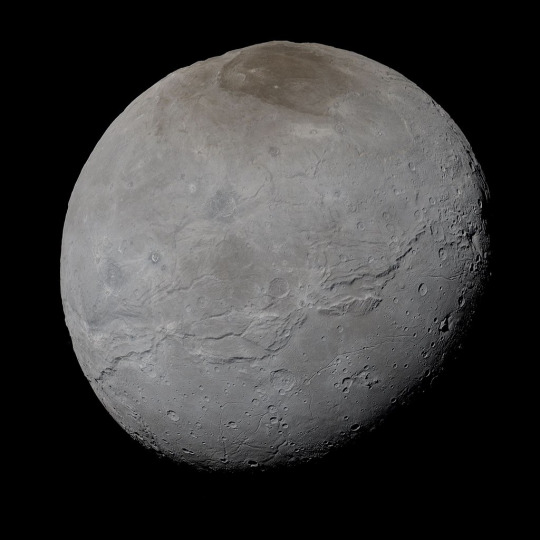
Styx (sticks) - about 16x9x8km.
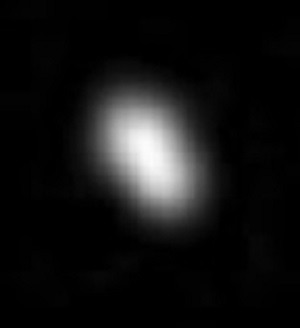
Nix (nicks) - 50x33x31km

Kerberos (curb-er-os) - 19x10x9km

Hydra (hi-drah) - 51x36x31km

Note: all moons beyond Charon are irregular prograde moons. There are no more moons.
Pluto is the largest yet not the most massive planetoid. That title goes to Eris, who is 27% more massive than Pluto and around 70km smaller than Pluto. We will discuss Eris in a later study. Pluto has a radius of about 1188km. This makes it about twice as large as its moon Charon.
Currently Pluto has only been visited by one spacecraft, and that is the 2015 visit by New Horizons. It is interesting to note that Voyager 1 had a trajectory that would have taken it to Pluto if it had not had its course changed to interact with Titan, which took it on a faster hyperbolic trajectory. This means we would have Voyager images which would have discovered Pluto’s other 4 moons and also further confirmed the existence of Charon.
Pluto is on a 2:3 resonance with Neptune which “protects” it from being gravitationally disturbed by Neptune, and flung into an orbit which takes it much further out, or even on a hyperbolic trajectory. This class of objects which fall into this resonance are called plutinos.
Originally, until 2006, Pluto was known as the solar system’s 9th planet, which was odd. From February 1979 to February 1999, it was the solar system’s 8th planet due to being closer to the sun than Neptune. Pluto’s orbit overlaps slightly with Neptune’s.

Why was Pluto not classified as an asteroid all those years ago? Well, it was the only one of its kind, the Kuiper Belt was not found until 1992, so astronomers knew it had to be a planet. But what was odd was that it was much more off the solar system’s plane, and it was much more eccentric. They didn’t even know how massive or large it was until the 1978 discovery of Charon which knocked it down to 1/5 of the Moon’s mass. Which was surprisingly small for a planet.
Brian Marsden made multiple attempts to declassify Pluto as the 9th planet, which failed. Eventually, the discovery of Eris lead to the IAU establishing the term “dwarf planet” and classifying Eris and Pluto as such in 2006.
Here is a fun fact to note: New Horizons was launched in January 2006, while Pluto was still a planet. It reached Pluto when it was no longer a planet.
#pluto#charon#styx#nix#kerberos#hydra#dwarfplanet#plutino#space#astronomy#dwarf planet#kuiperbelt#kuiper belt#solar system#solarsystem#neptune#explaination#facts#images#paragraphed
12 notes
·
View notes